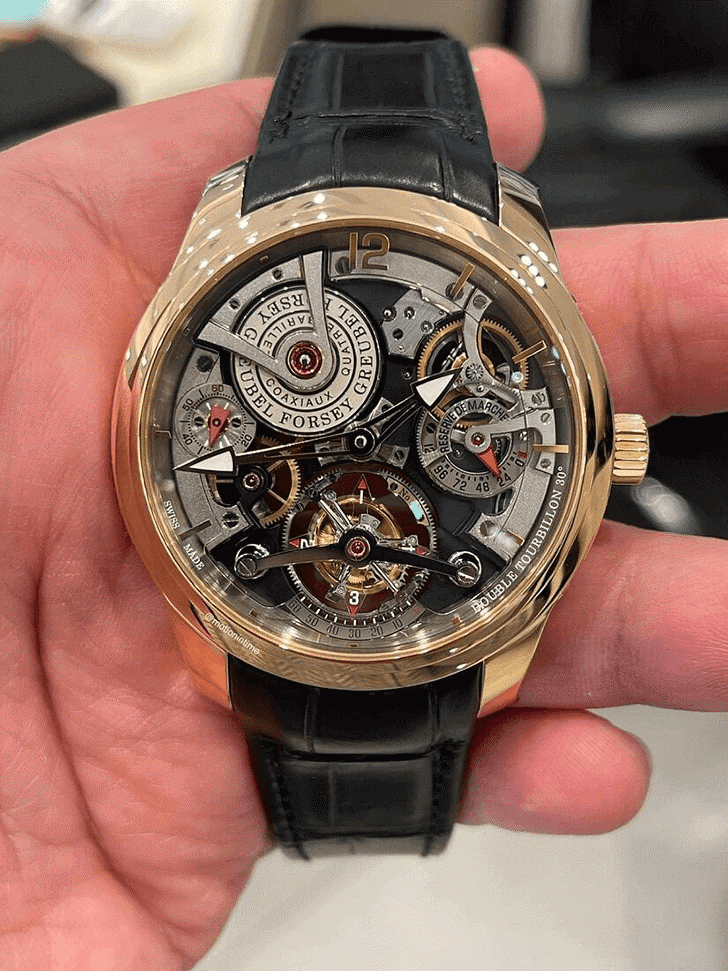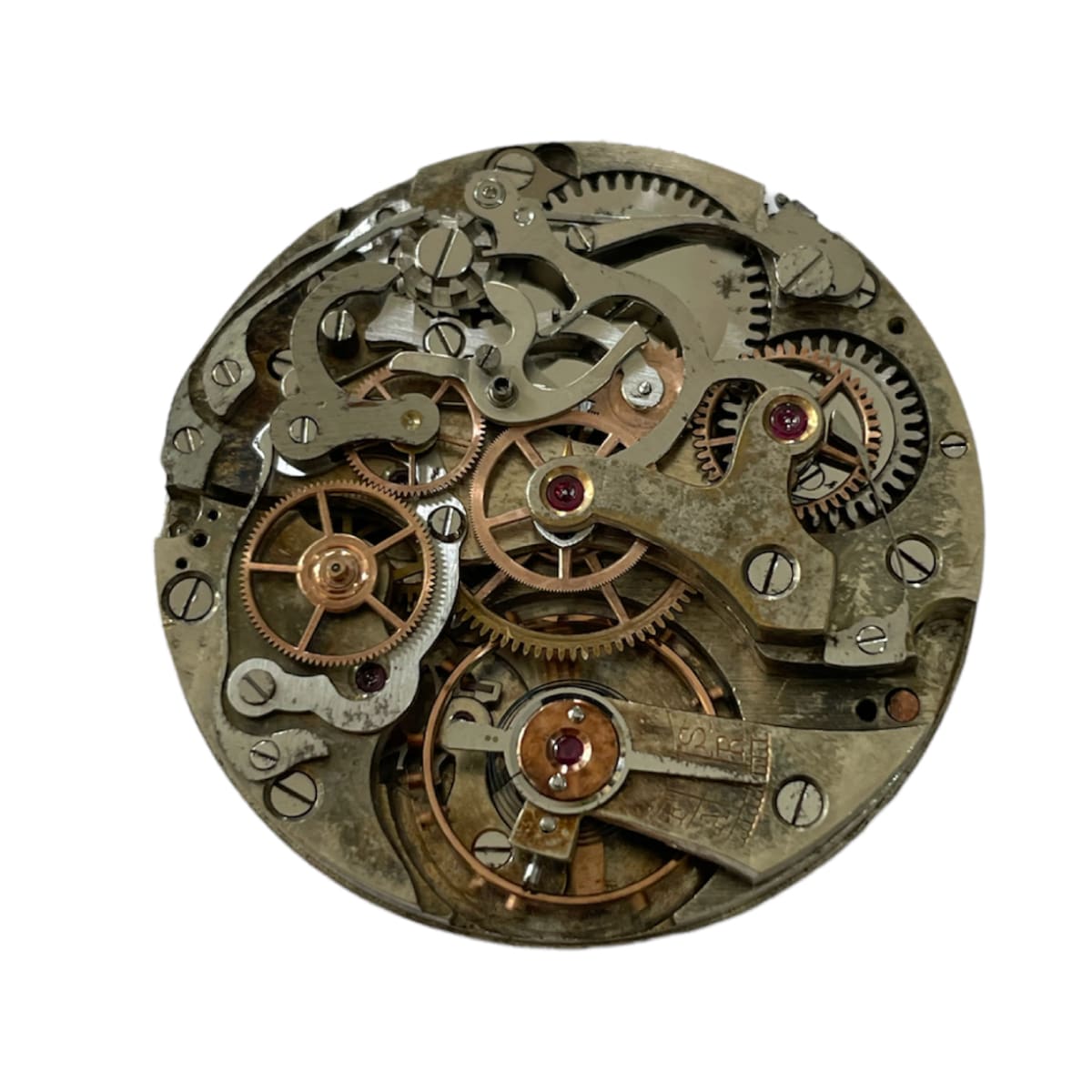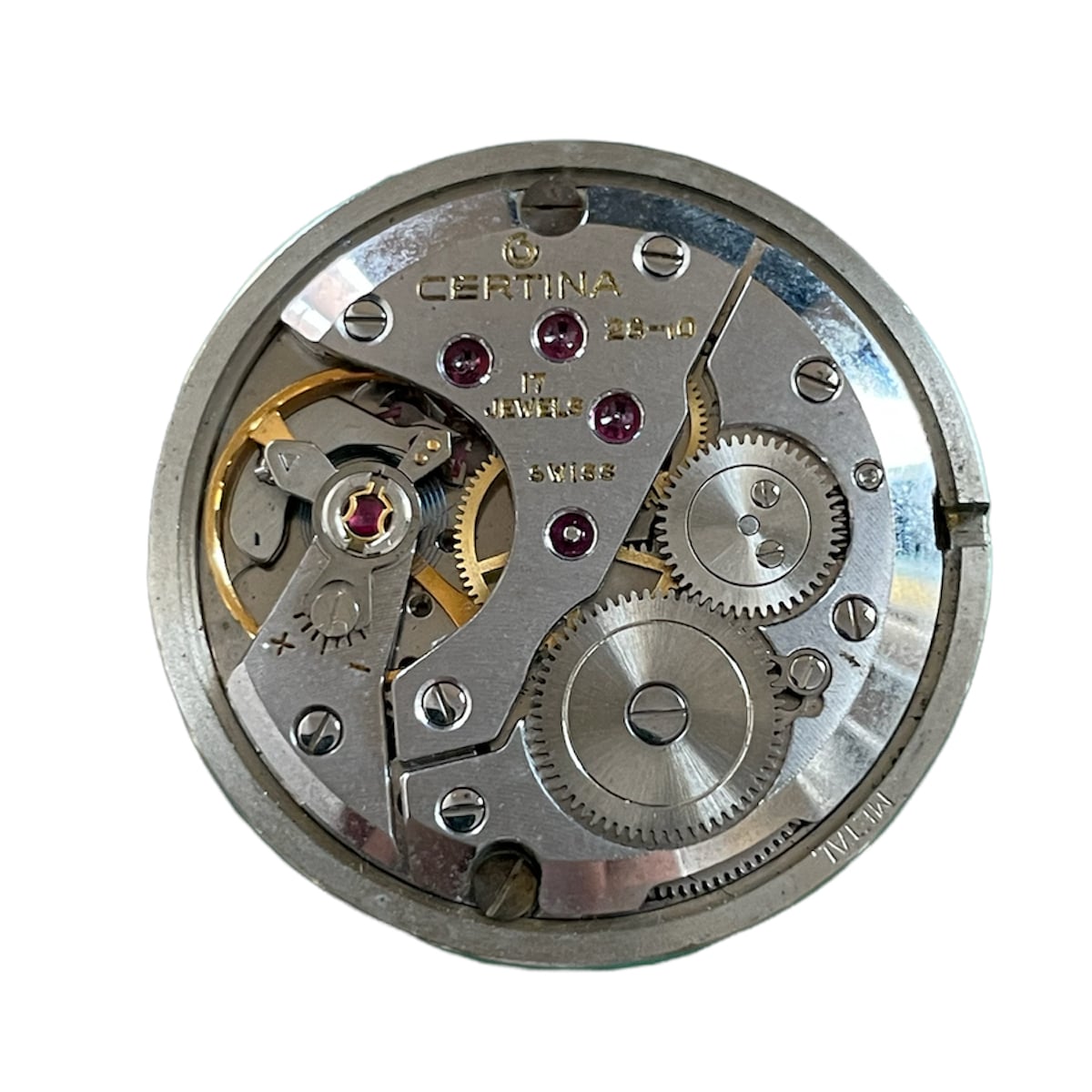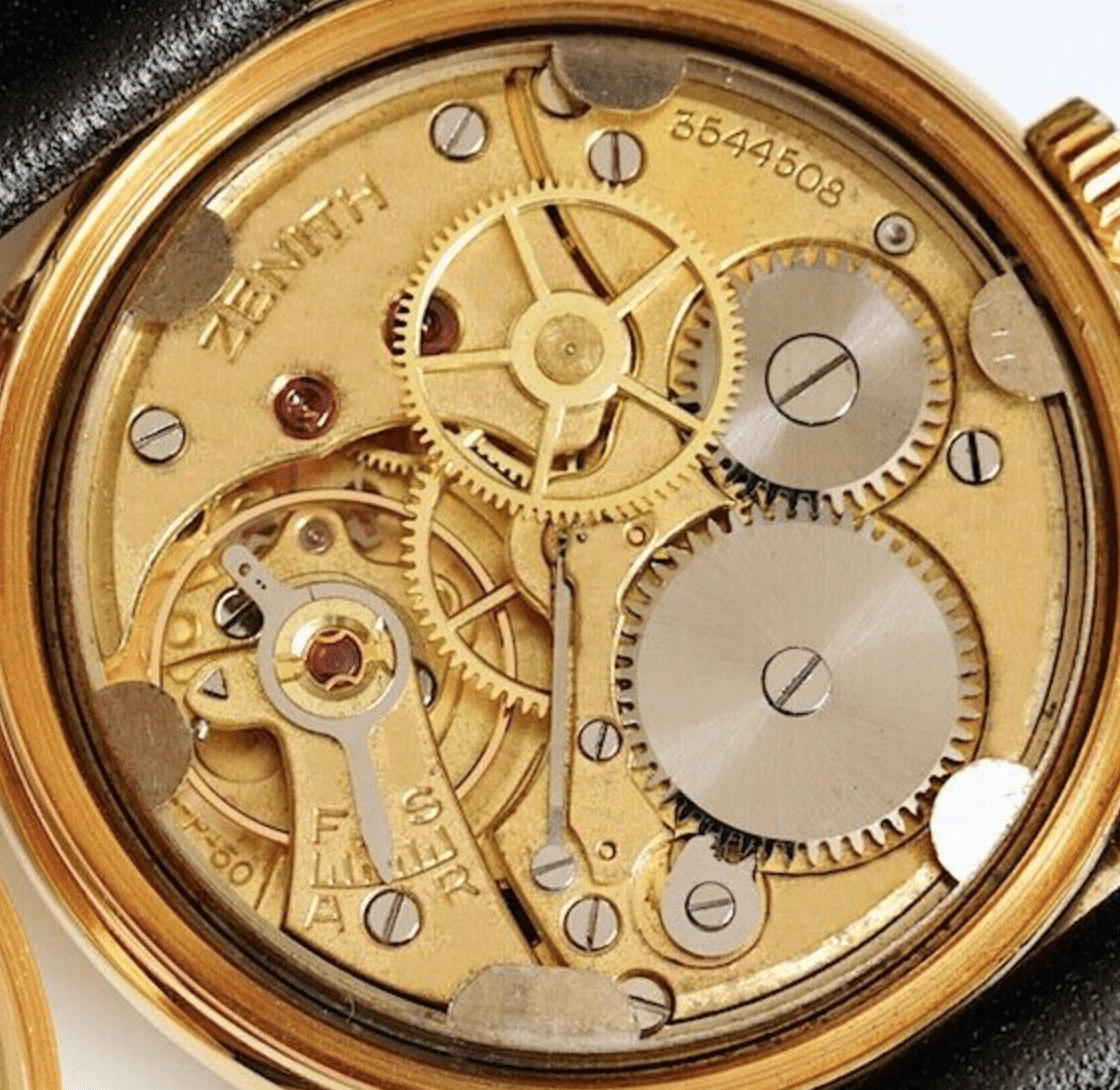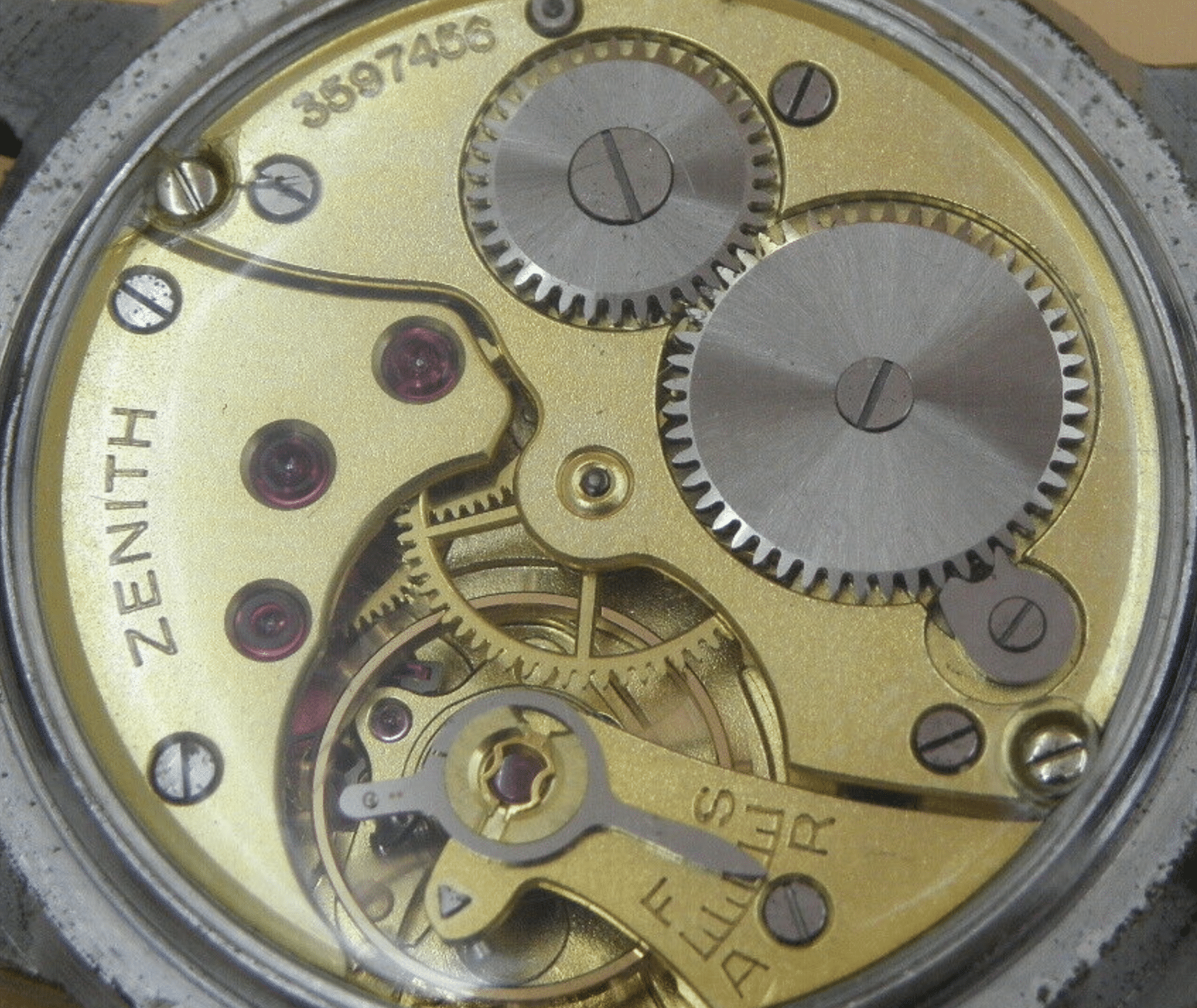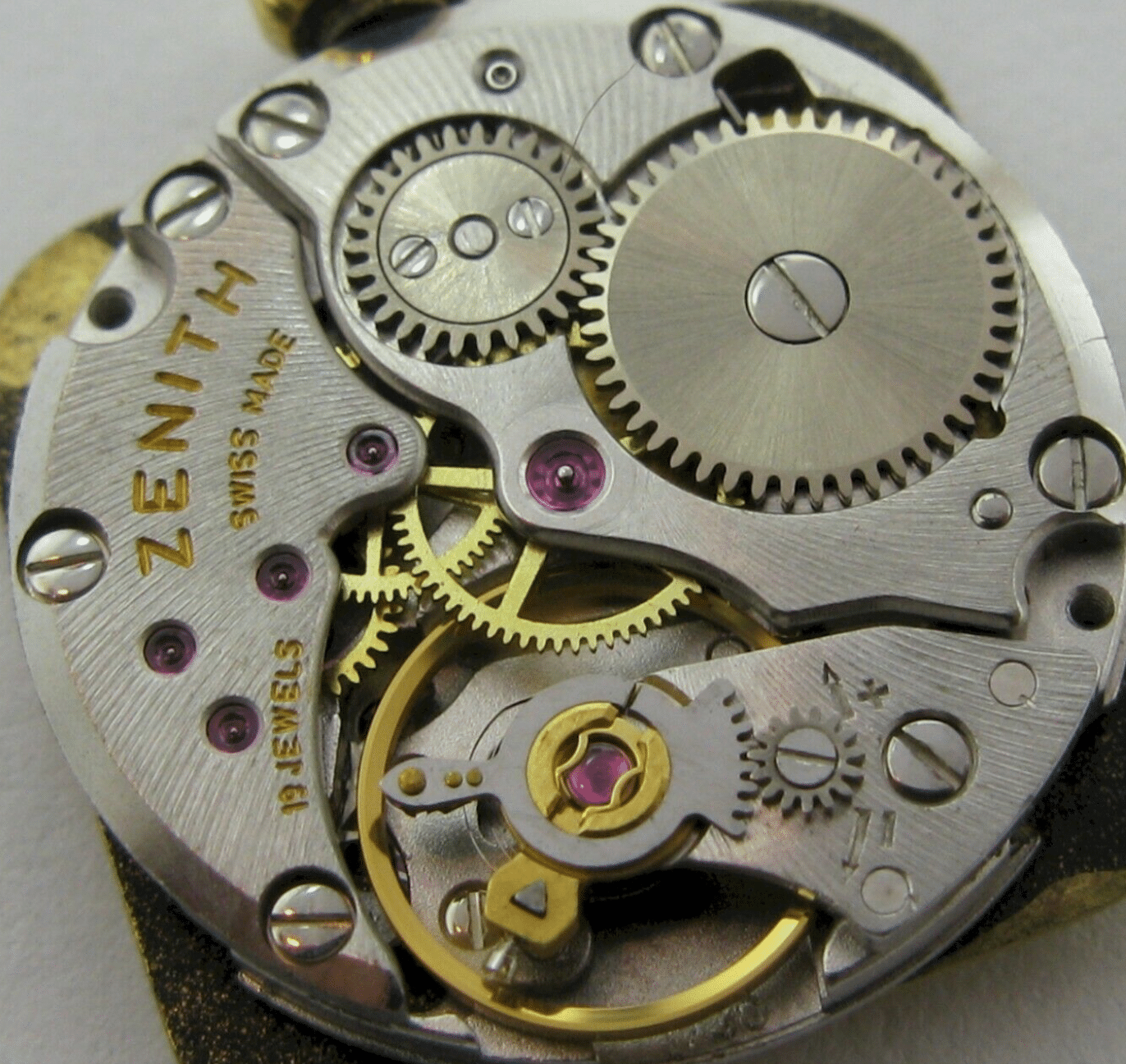Generally speaking a mainspring barrel will perform about 6 rotations during its autonomy (the time it takes to transition from a fully wound state to being exhausted). This period is determined by the sizes of the wheels and the pinions, the requirement for certain wheels to rotate once every 60 minutes and 60 seconds respectively, and the speed of the escapement. With a 4Hz watch (the most common escapement speed), the 6 mainspring rotations take about 48 hours and this is regarded as the most common power reserve of a simple watch movement. Add a complication like a chronograph, or torque-management facility like a slipping spring, and that reserve can shrink further. Why is the length of autonomy important? A person who wears their automatic on a Monday and leaves it unworn on Tuesday and Wednesday will find that it has stopped by Thursday morning. This is fine when the owner has only one watch, a watch winder, or rather likes the experience of resetting their watch. For some, however, the stopped watch is a headache and it is further exaggerated when the watch carries calendar complications that need to be reset by the crown or discreet pushers.
Manufacturers recognised this drustration and developed watches with two or three mainspring barrels, stacked or side-by-side, working in unison. This allowed greater power spring is attached to a bridle instead of the wall it can disengage with the wall if it is being pulled too hard. This system requires delicate calibration to avoid an overly sensitive bridle preventing the mainspring from winding within its optimal capacity. Unlike the stop-work, the slipping spring is particularly useful in an automatic watch as it allows the rotor to continue to move when stopping it dead can put huge stress on the gears of the rotor.
Although the slipping spring is perfectly effective, in horology there is nothing quite like improving upon perfect. Step forward the Richard Mille RM 030 with declutchable rotor, which, instead of restricting winding by way of a slipping spring or stop-work, automatically disengages the winding rotor when the power reserve has reached the top end of its capacity (50 hours) and re-engages when the reserve drops below 40 hours. It’s an interesting back-and-forth that can be tracked between the reserve indicator and the rotor clutch indicator, which are both displayed on the dial.
The Richard Mille RM 030 with declutchable rotor. Highly automated and responsive mechanical power management.
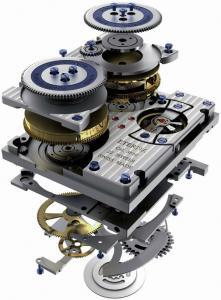
The Eterna Spherodrive 8 Day Calibre 3510. The exploded image provides a good view of the two barrels and the ratchet wheels above them. Eterna’s rectangular Caliber 3510 movement embodies all the human ingenuity and inspired micro-engineering that have long distinguished Swiss watchmakers. For a start, it requires hand-winding no more than three times a month, and provides 192 continous hours of timekeeping precision in between. Unlike most watches, it boasts two spring barrels rather than a single one. They have been serially coupled for smoother, more reliable operation. Better still, the barrels rest on self-lubricating Eterna Spherodriveball bearings that eliminate practically all the friction and tension that shorten the life of most movements. Calibre 3510 possesses a further refinement: a cut-off device that stops the balance wheel as soon as the energy remaining has is too low to guarantee precision.

